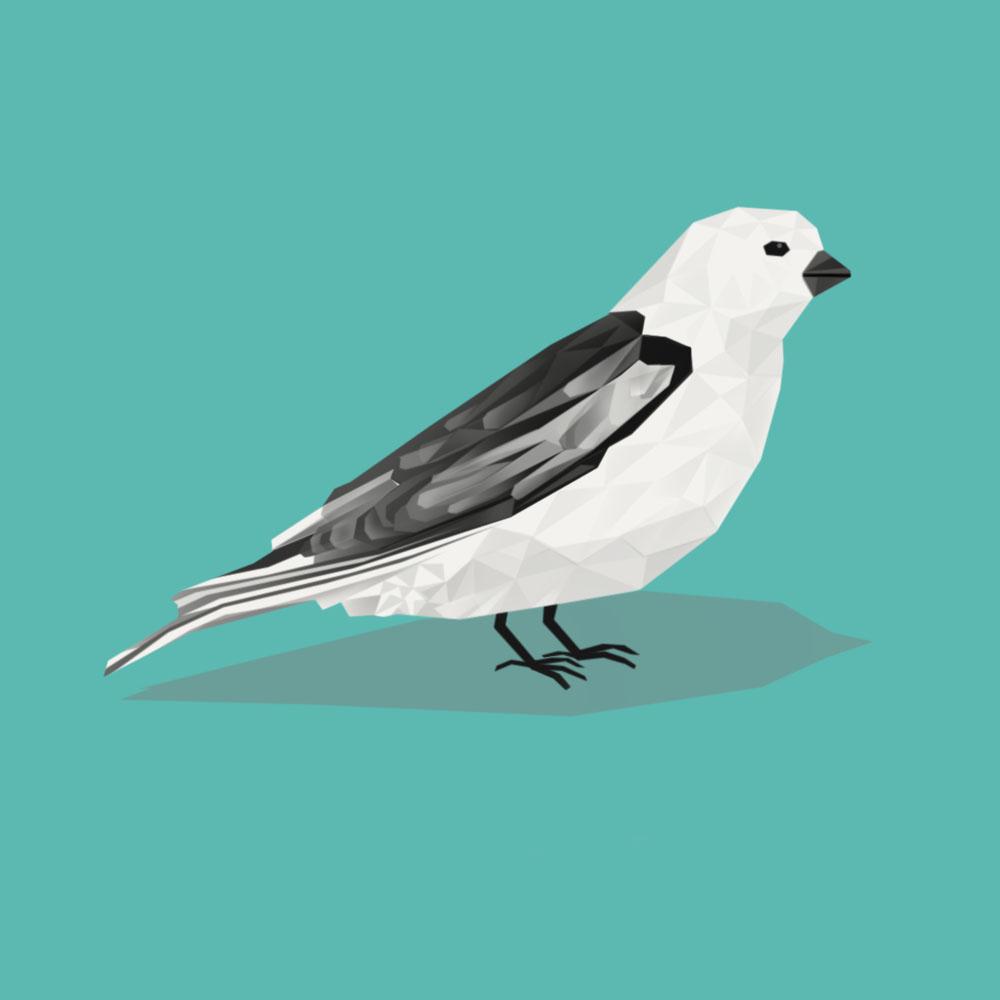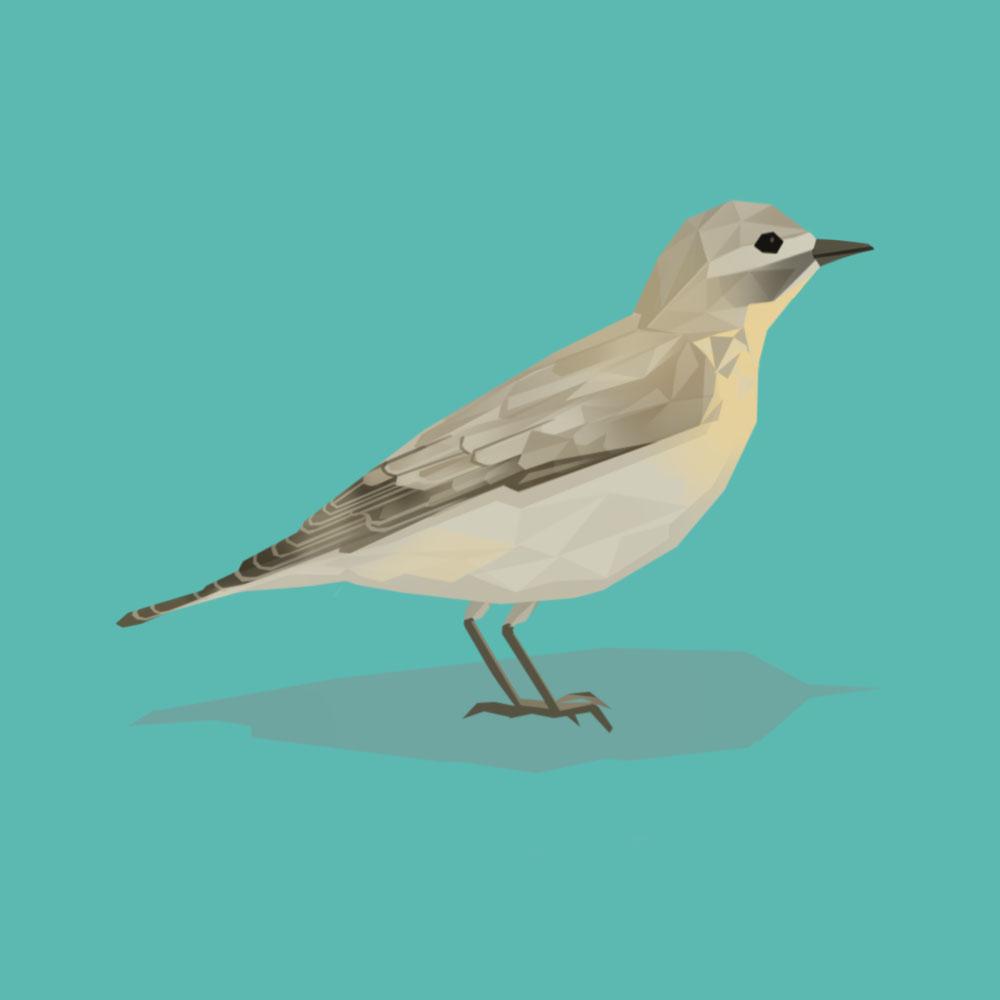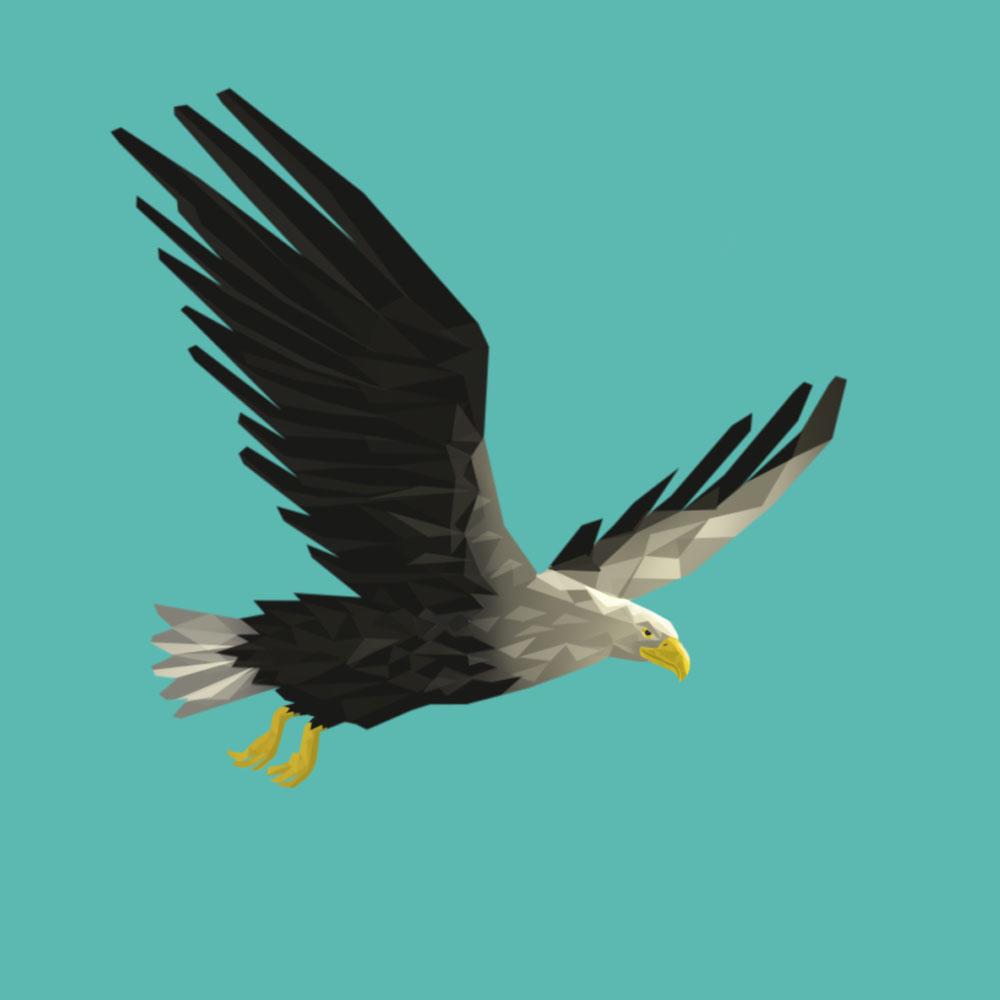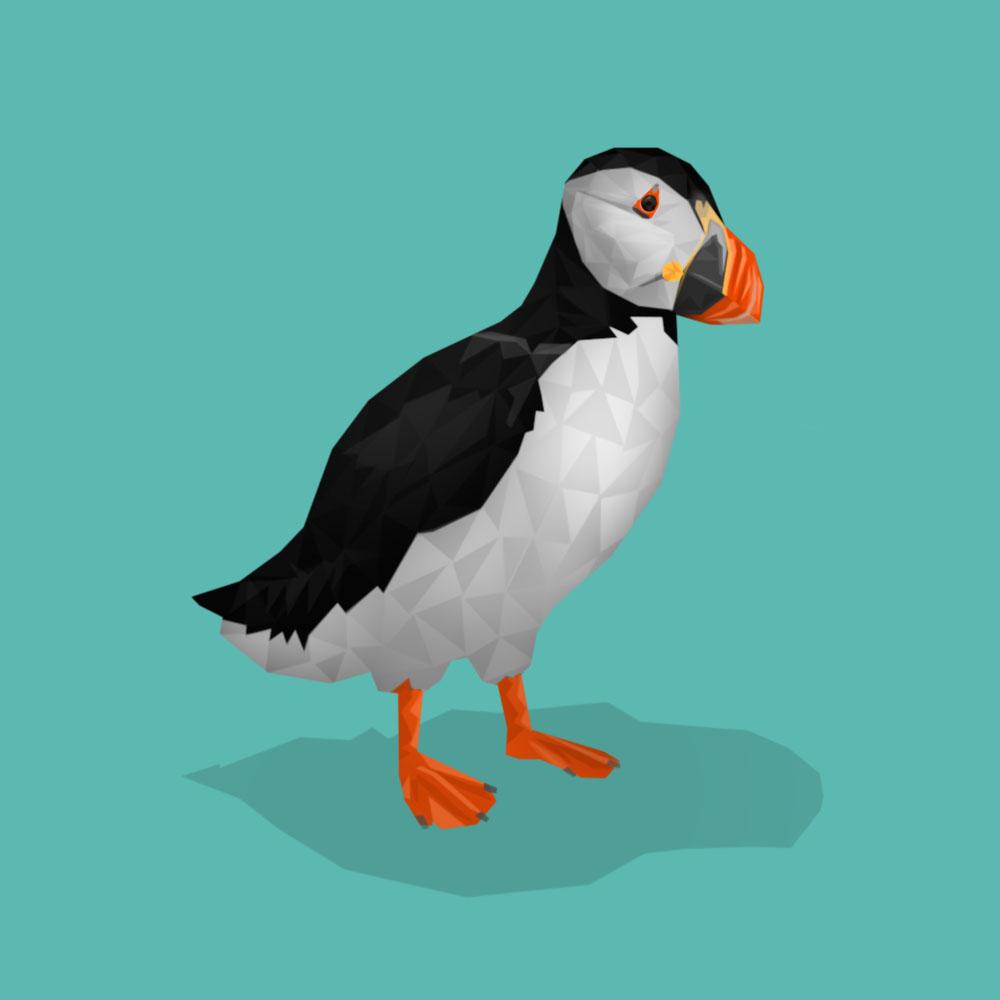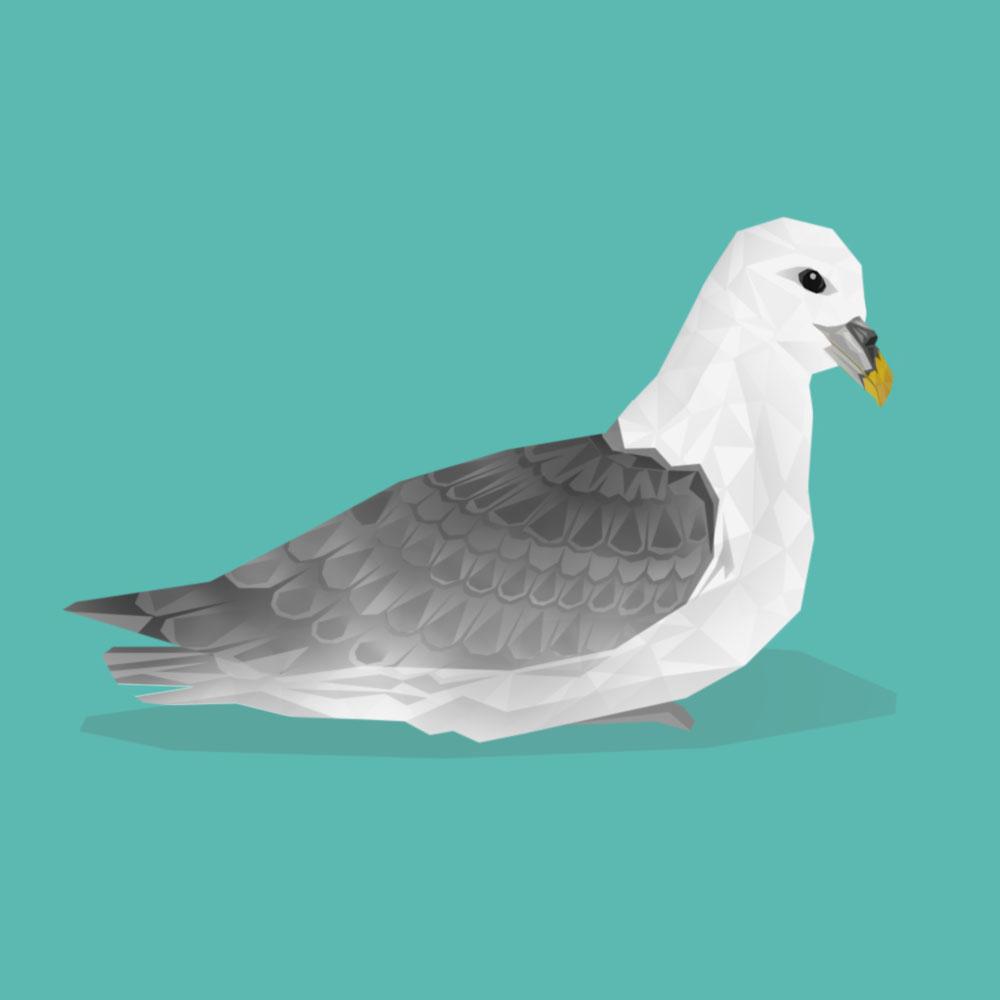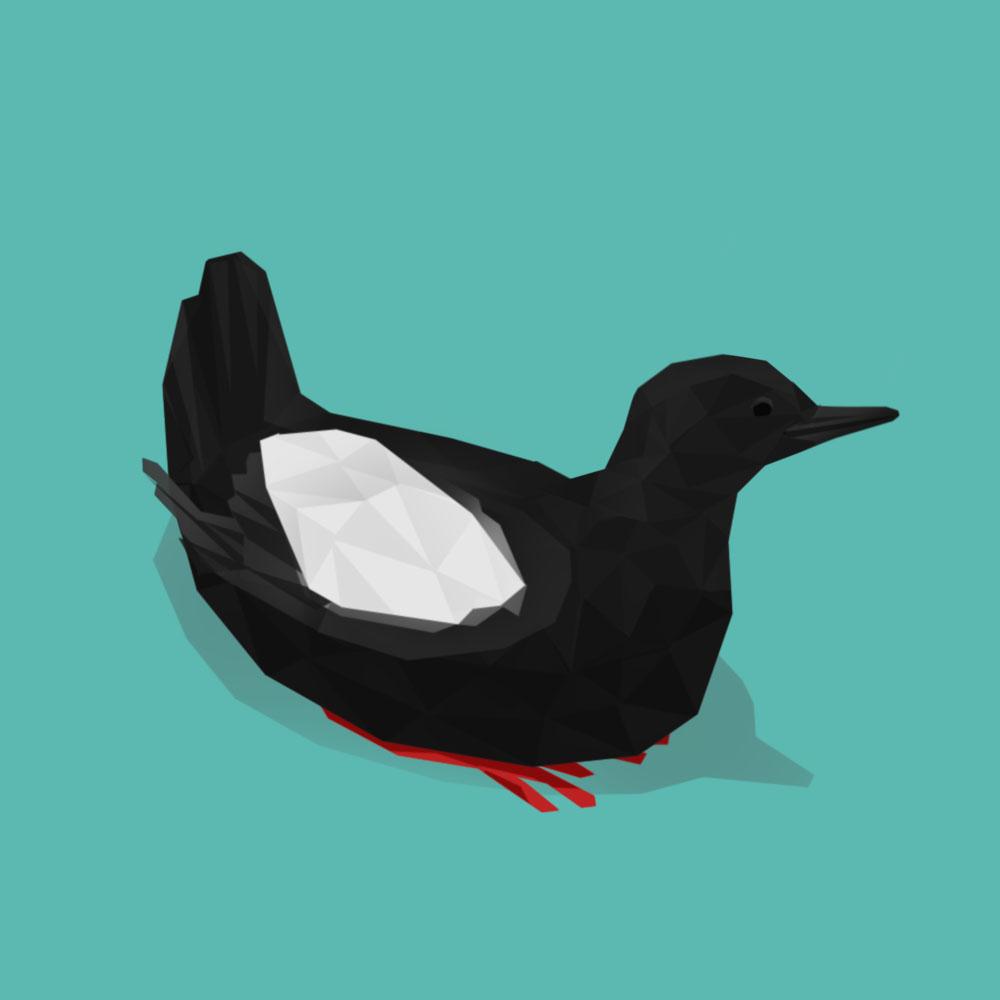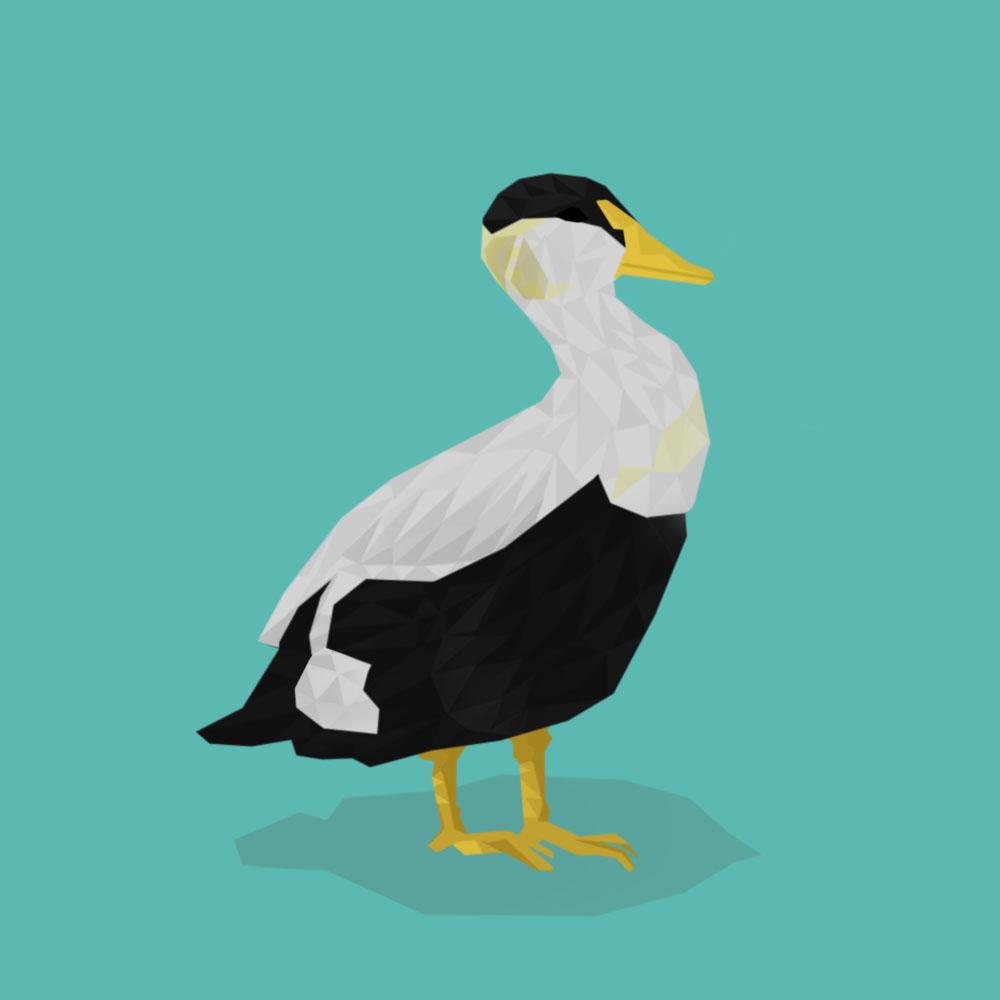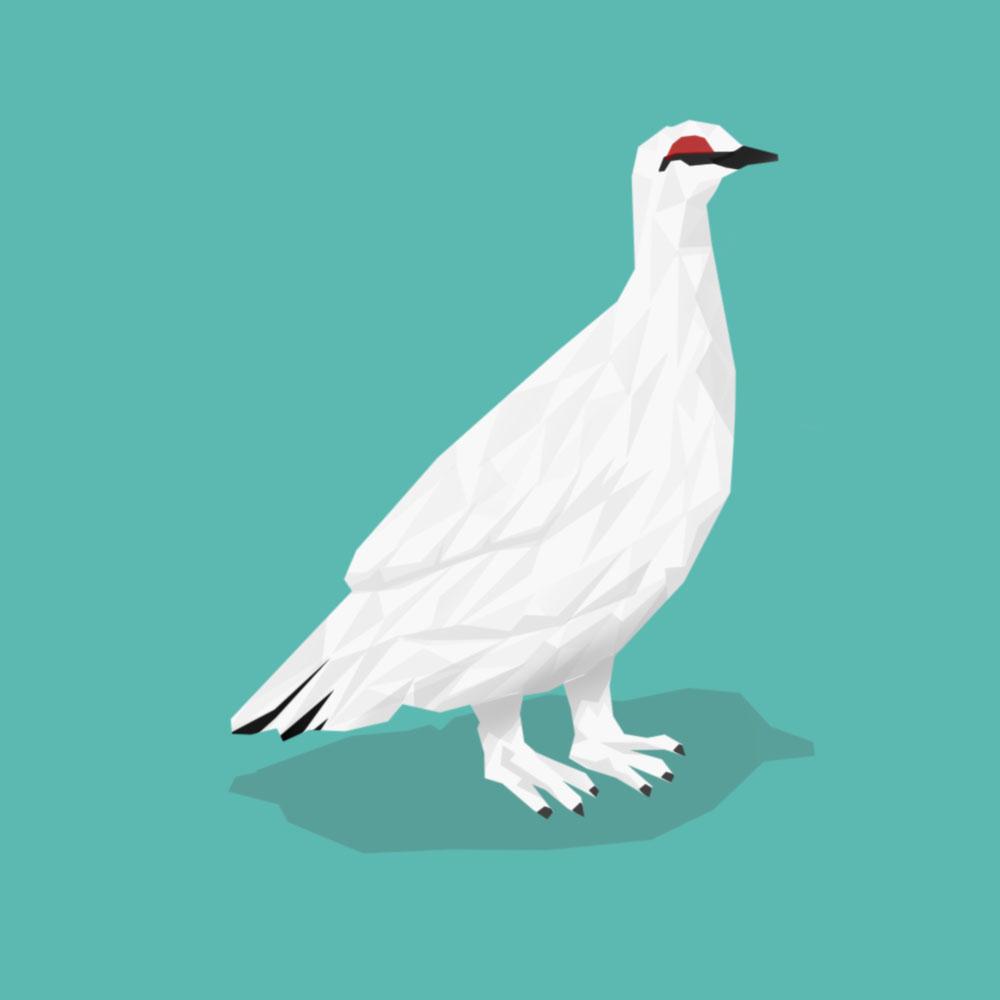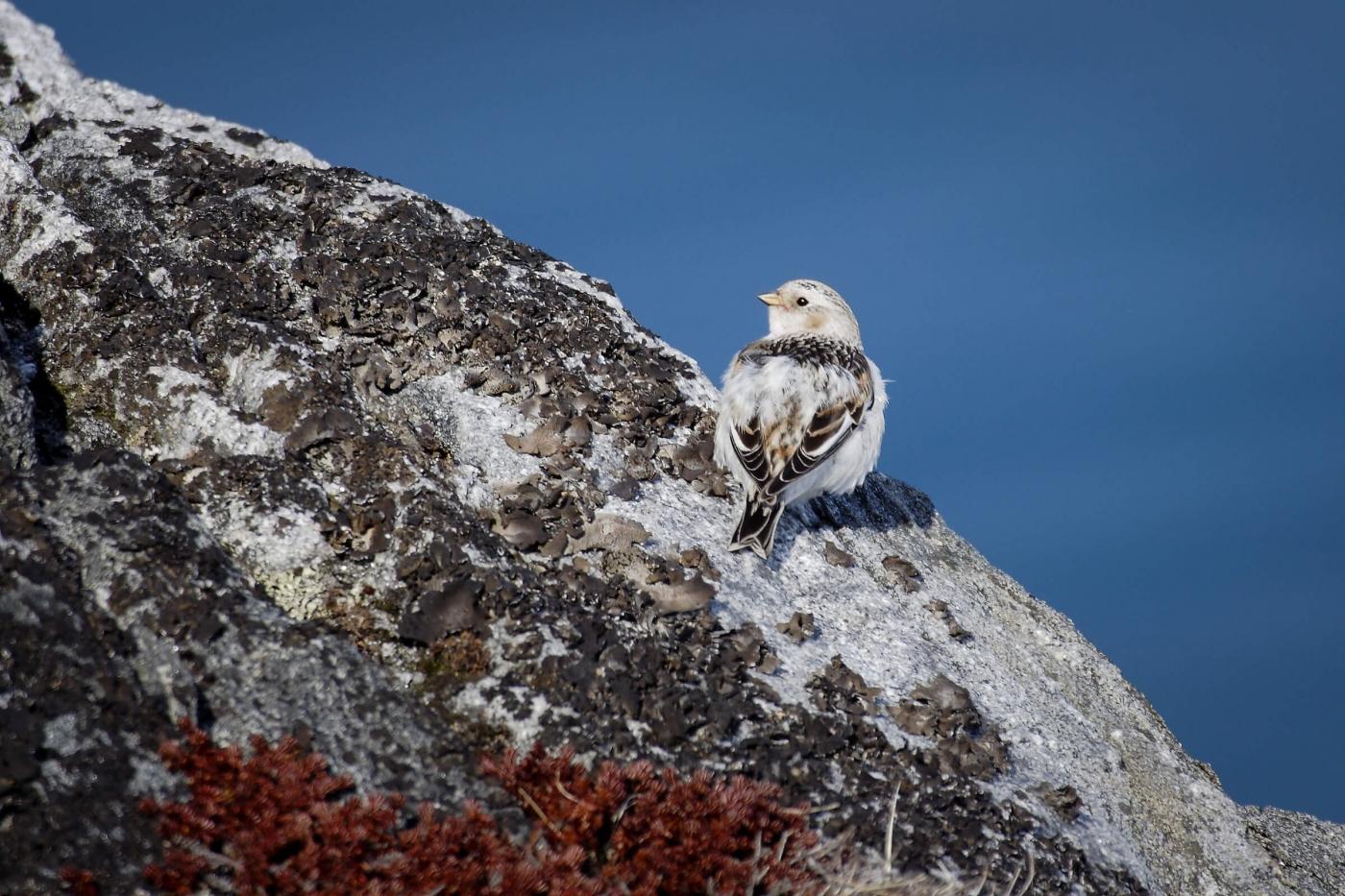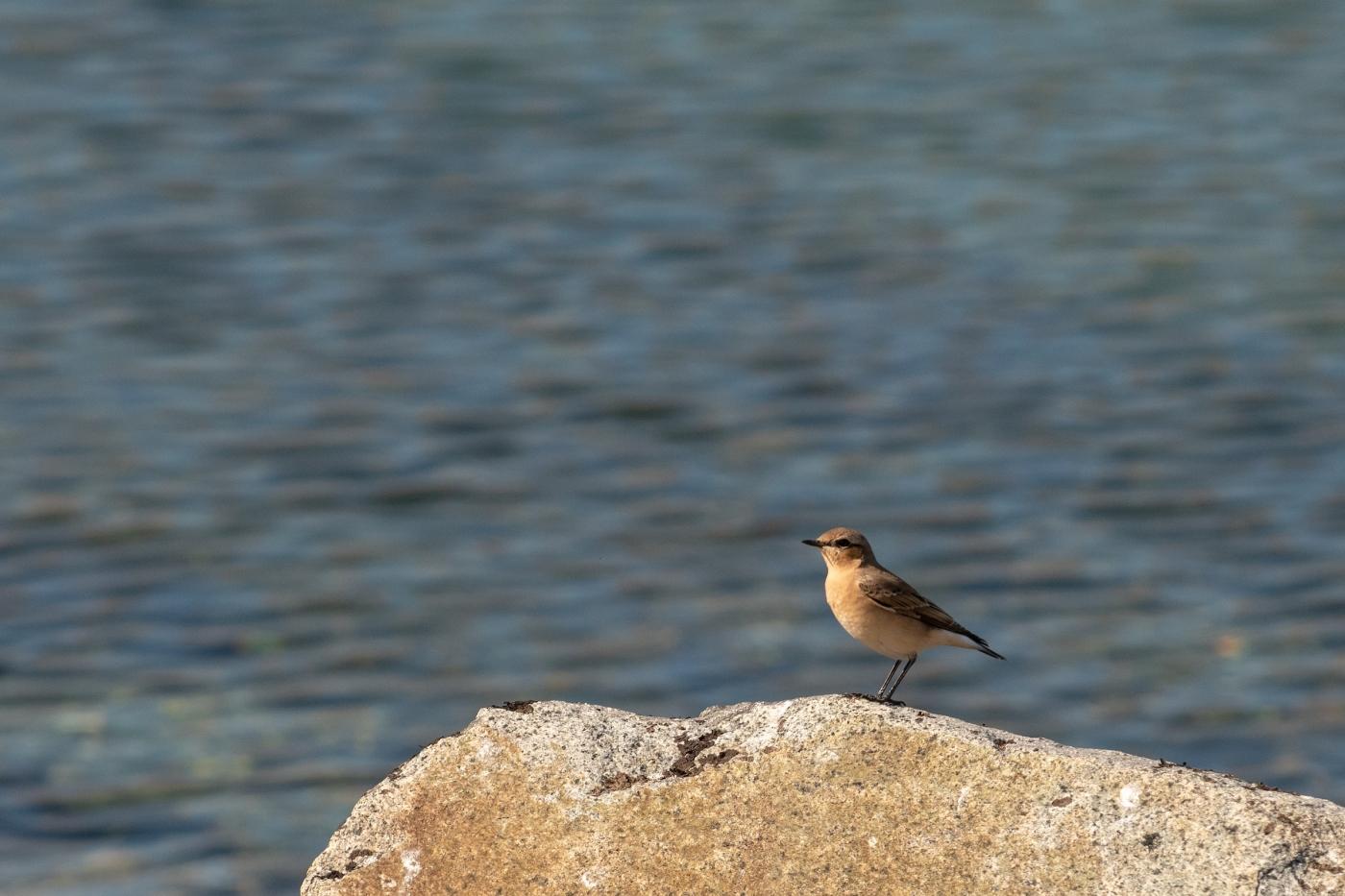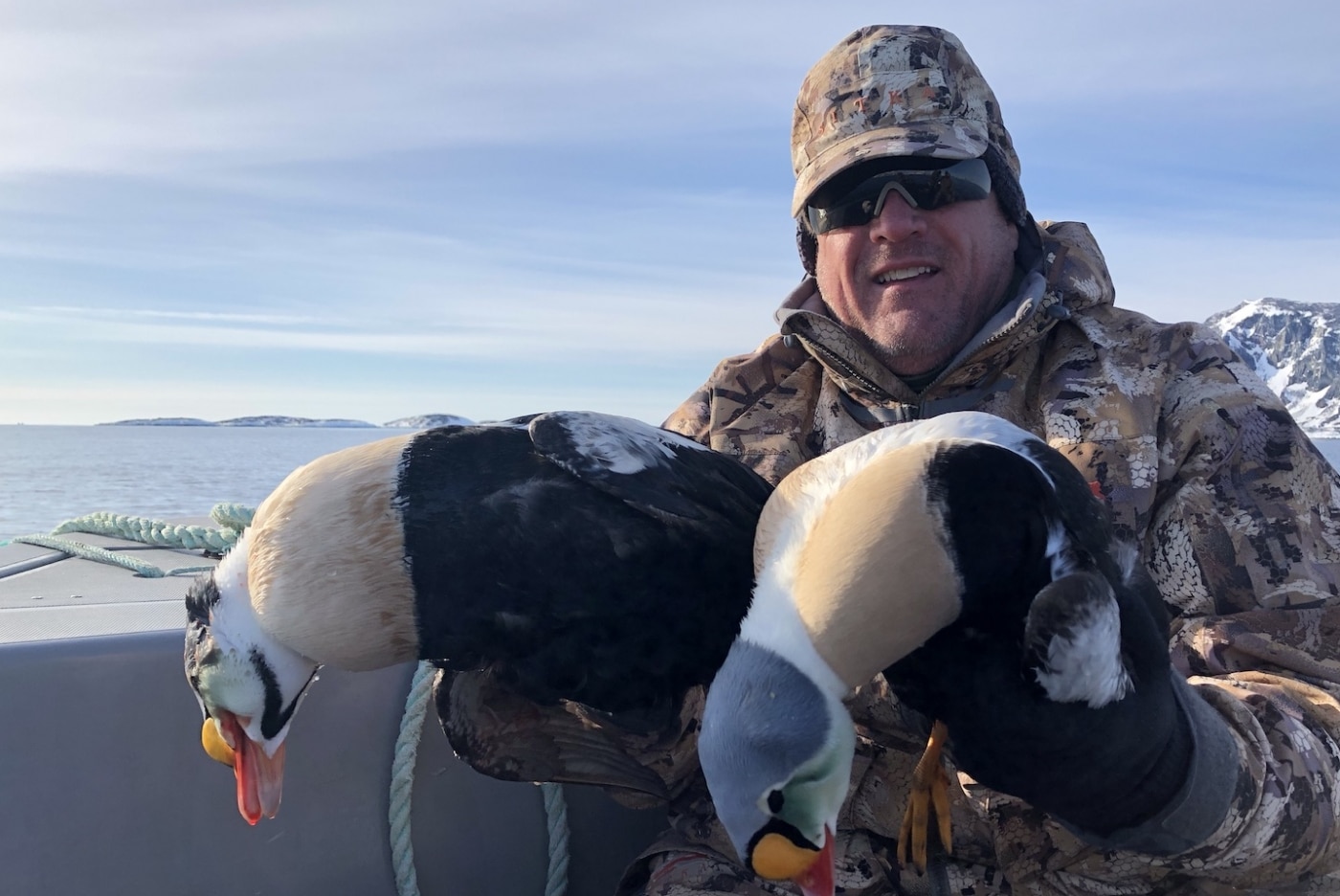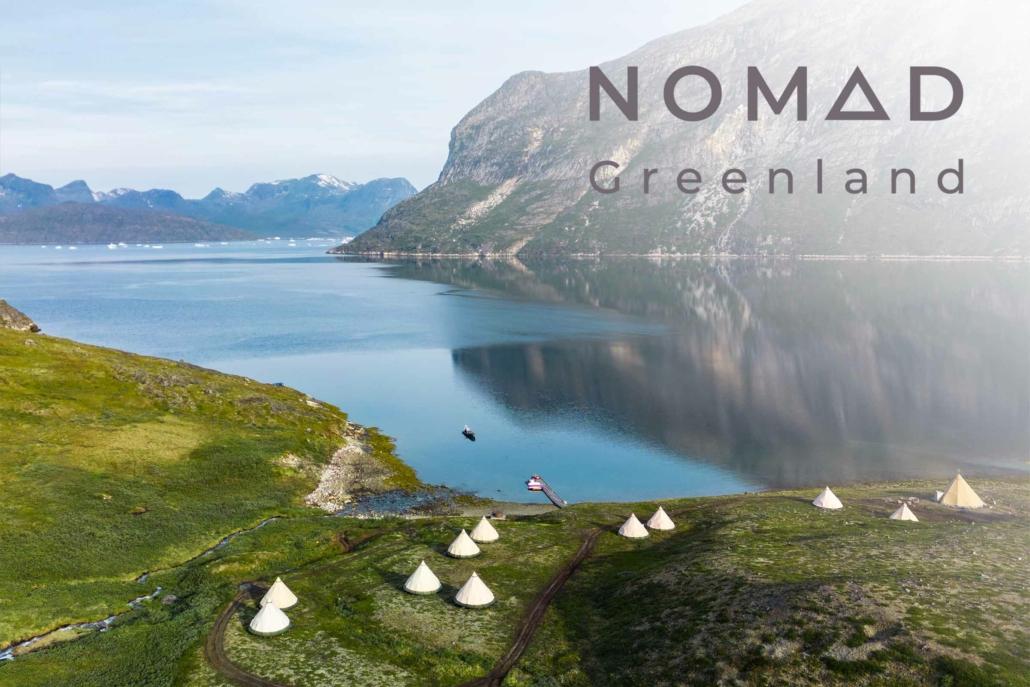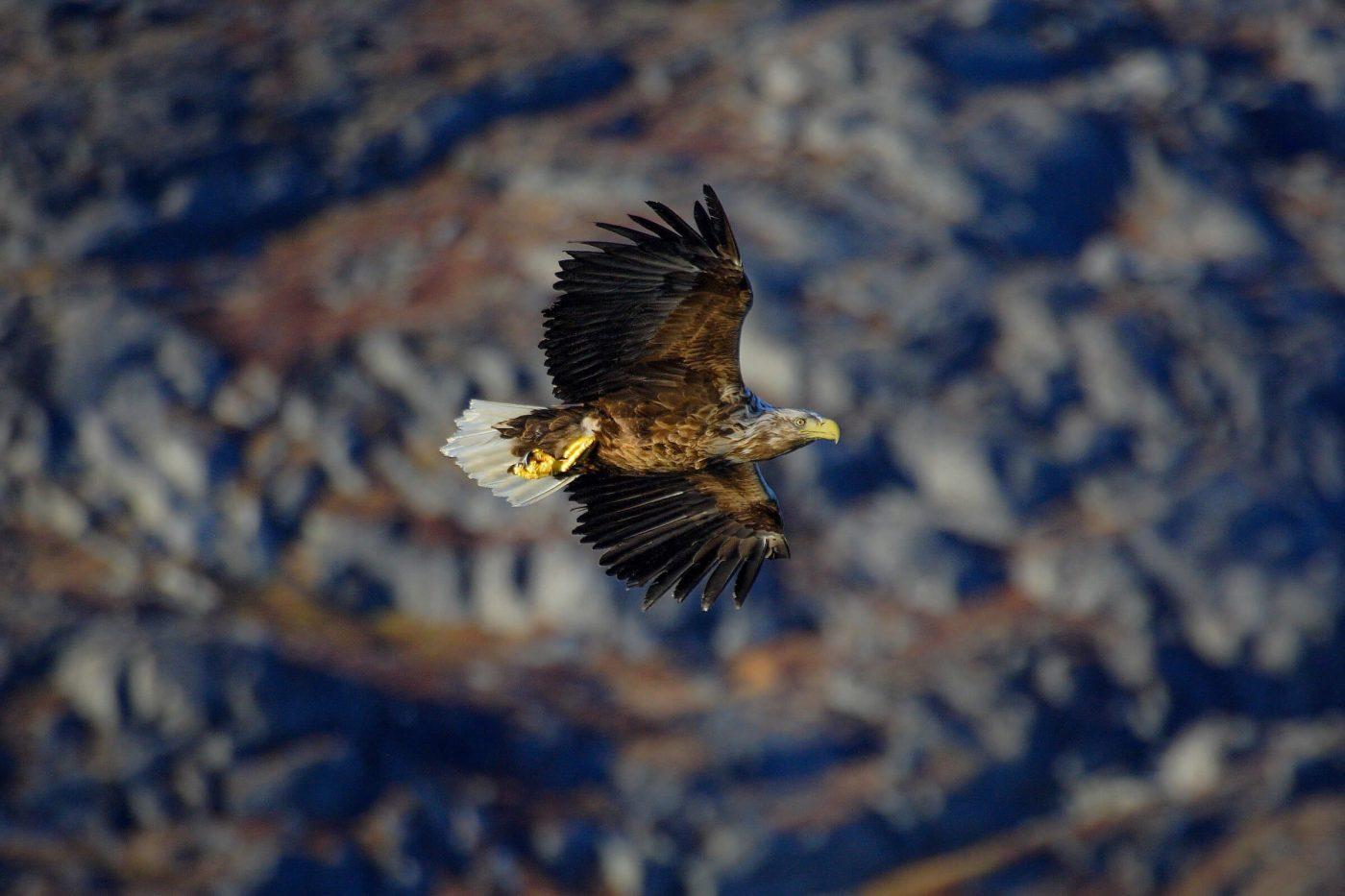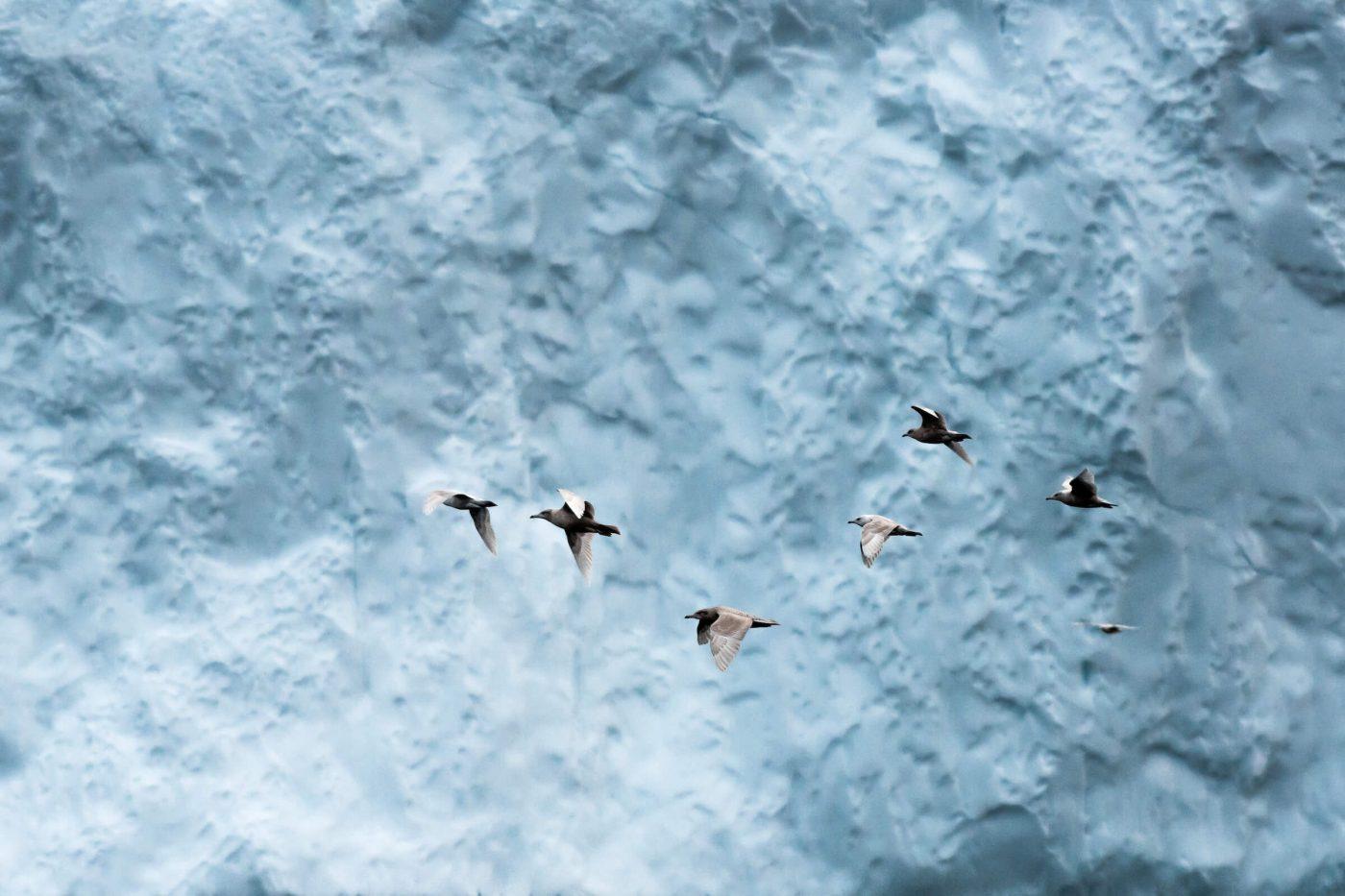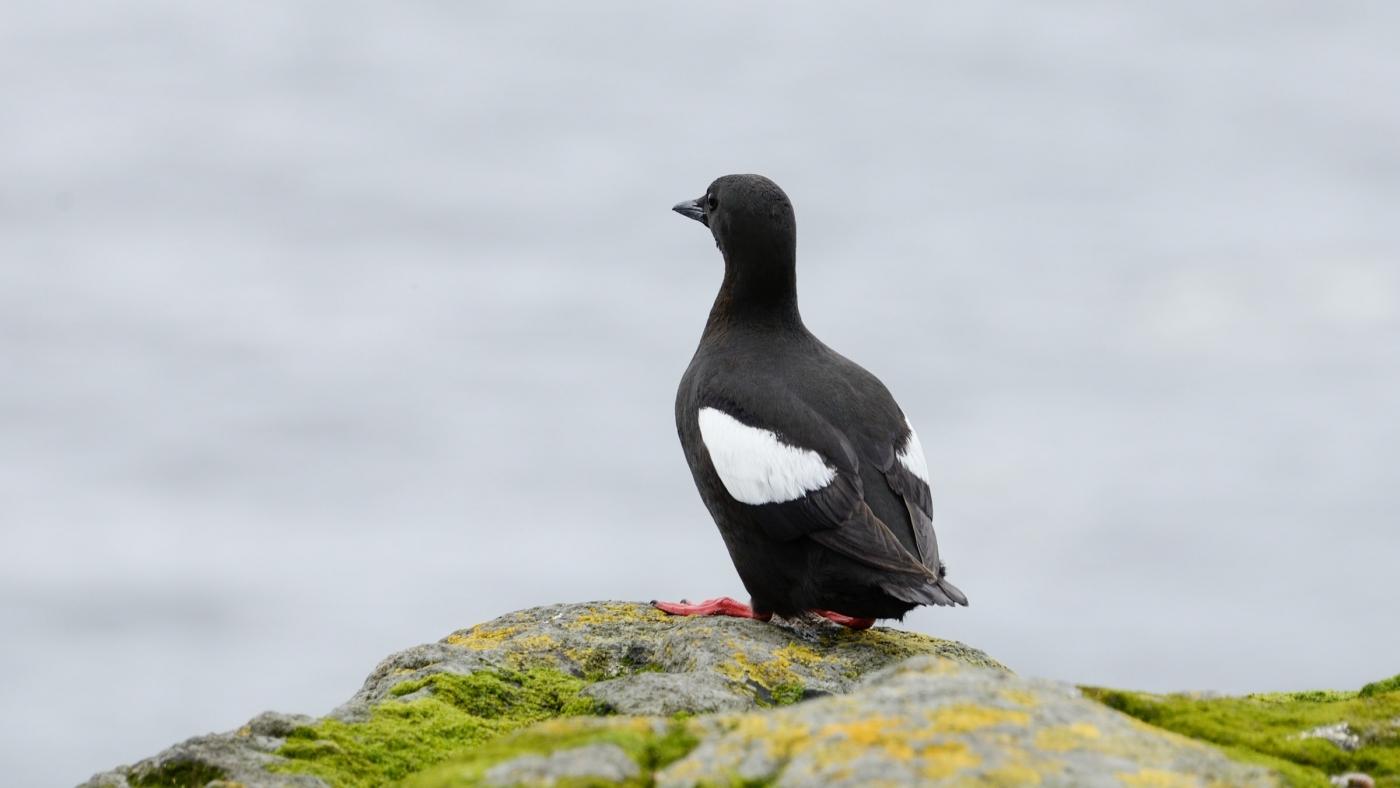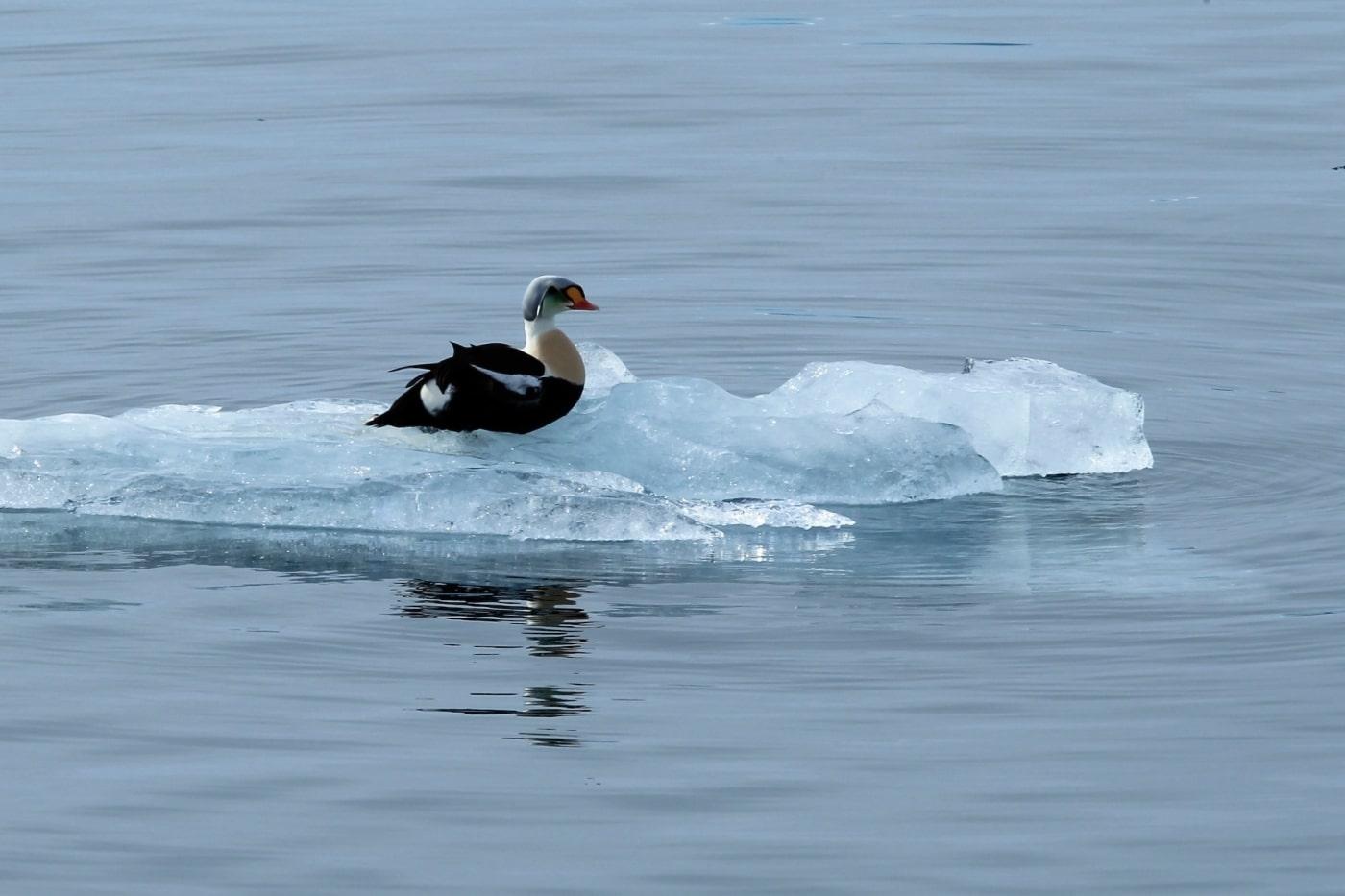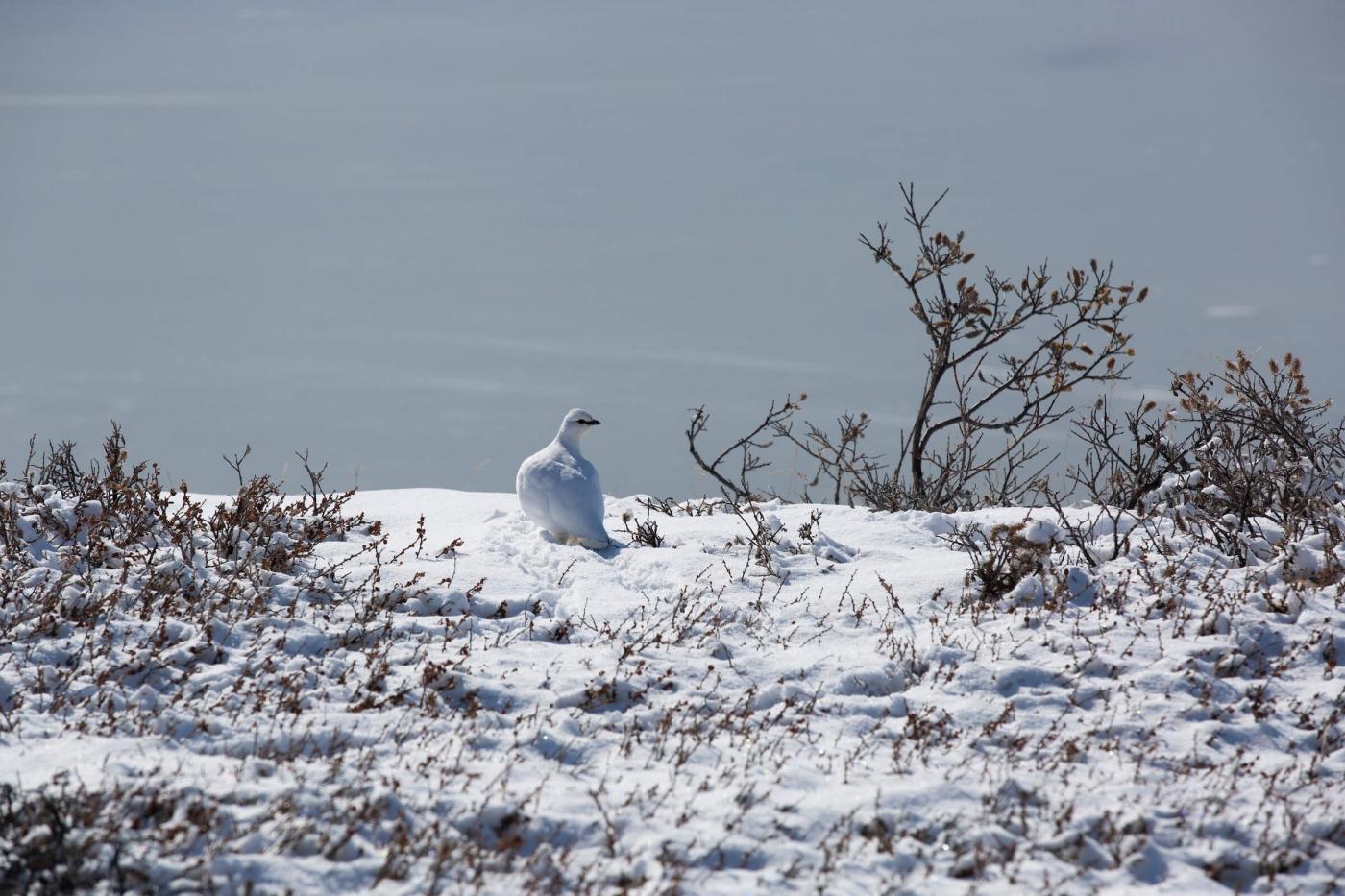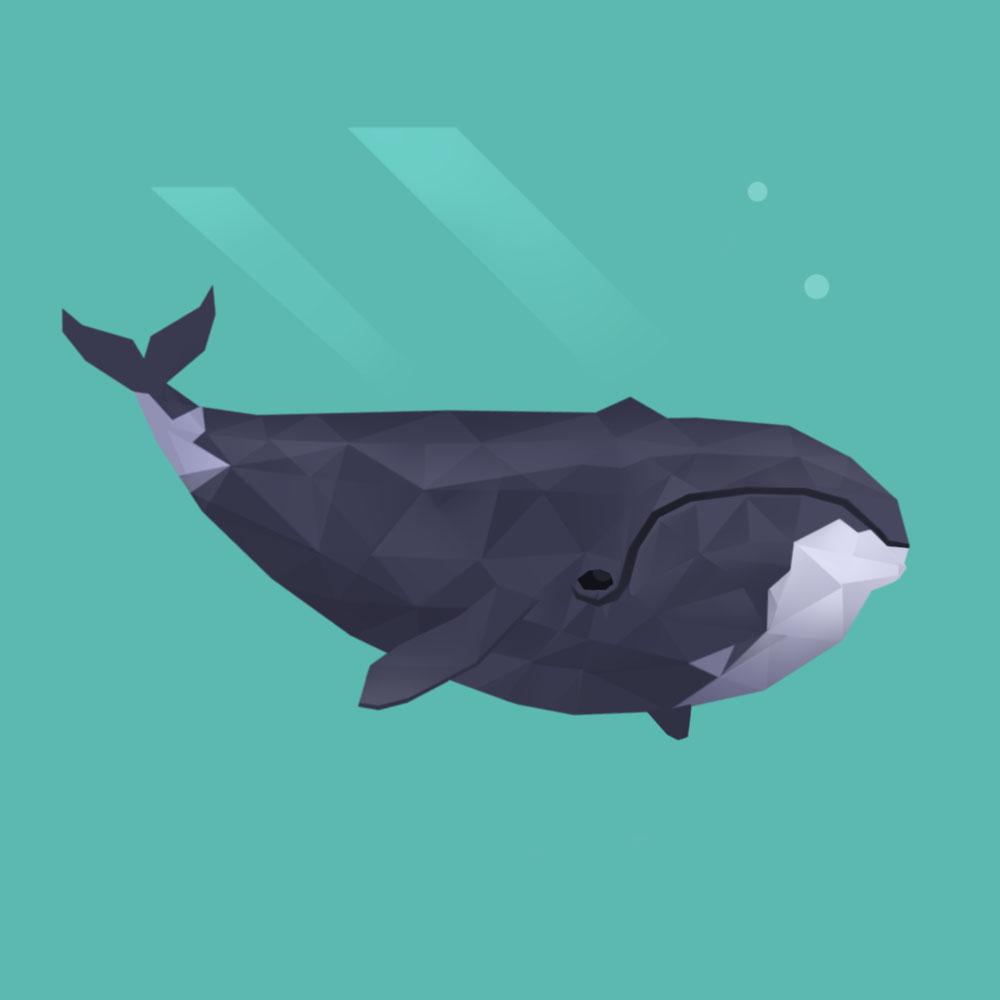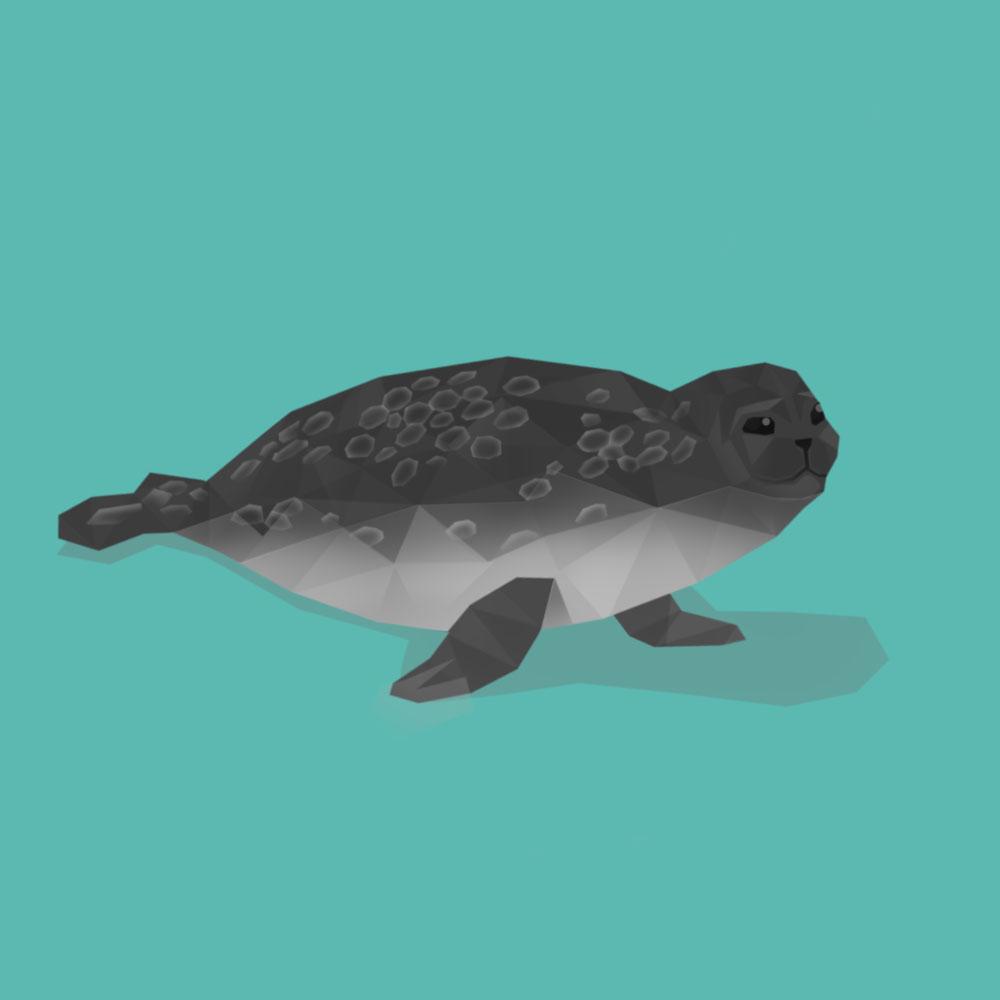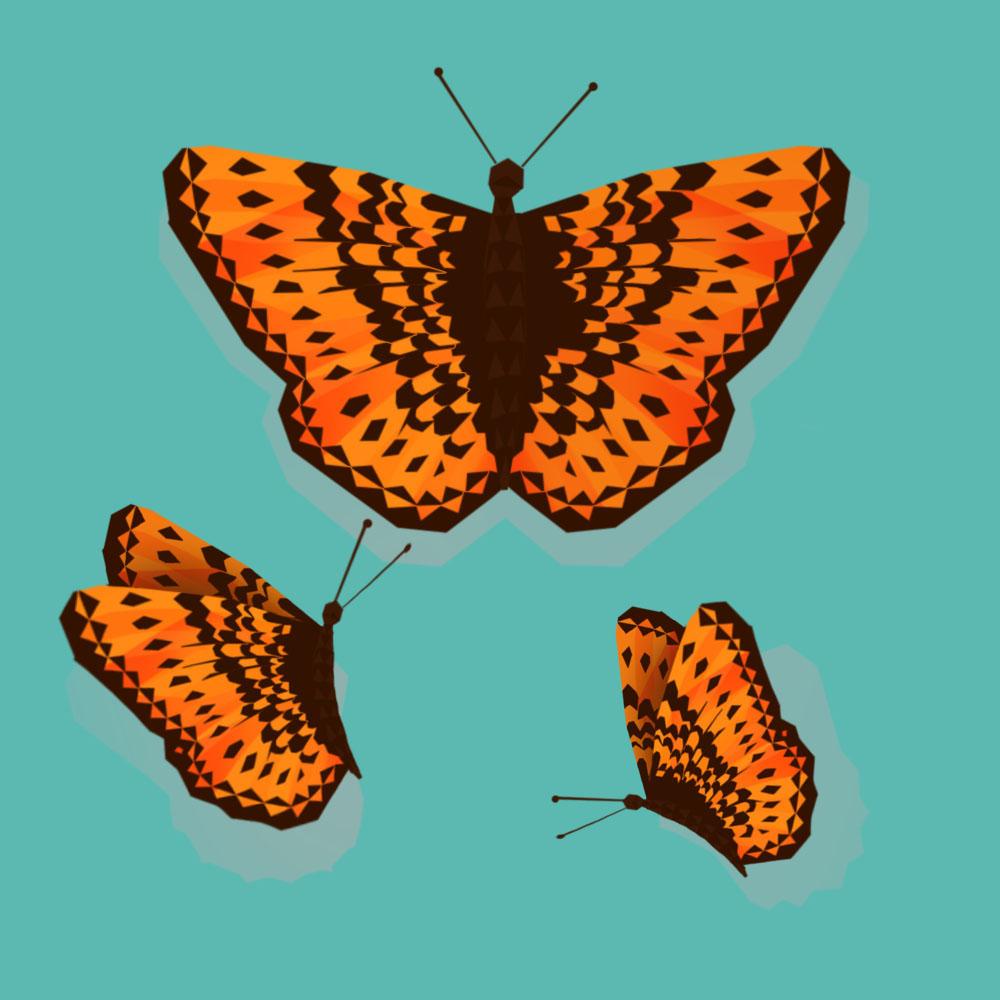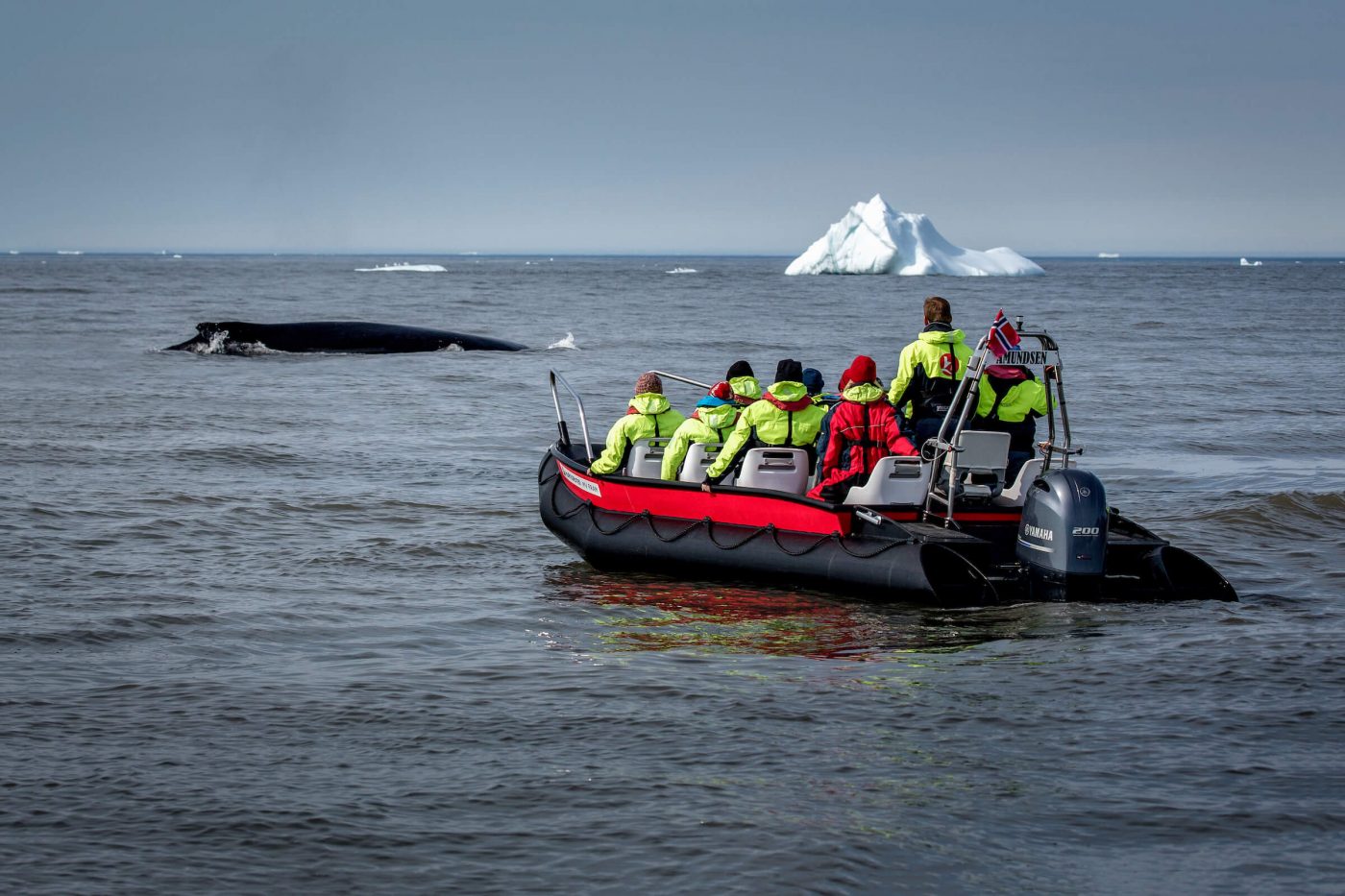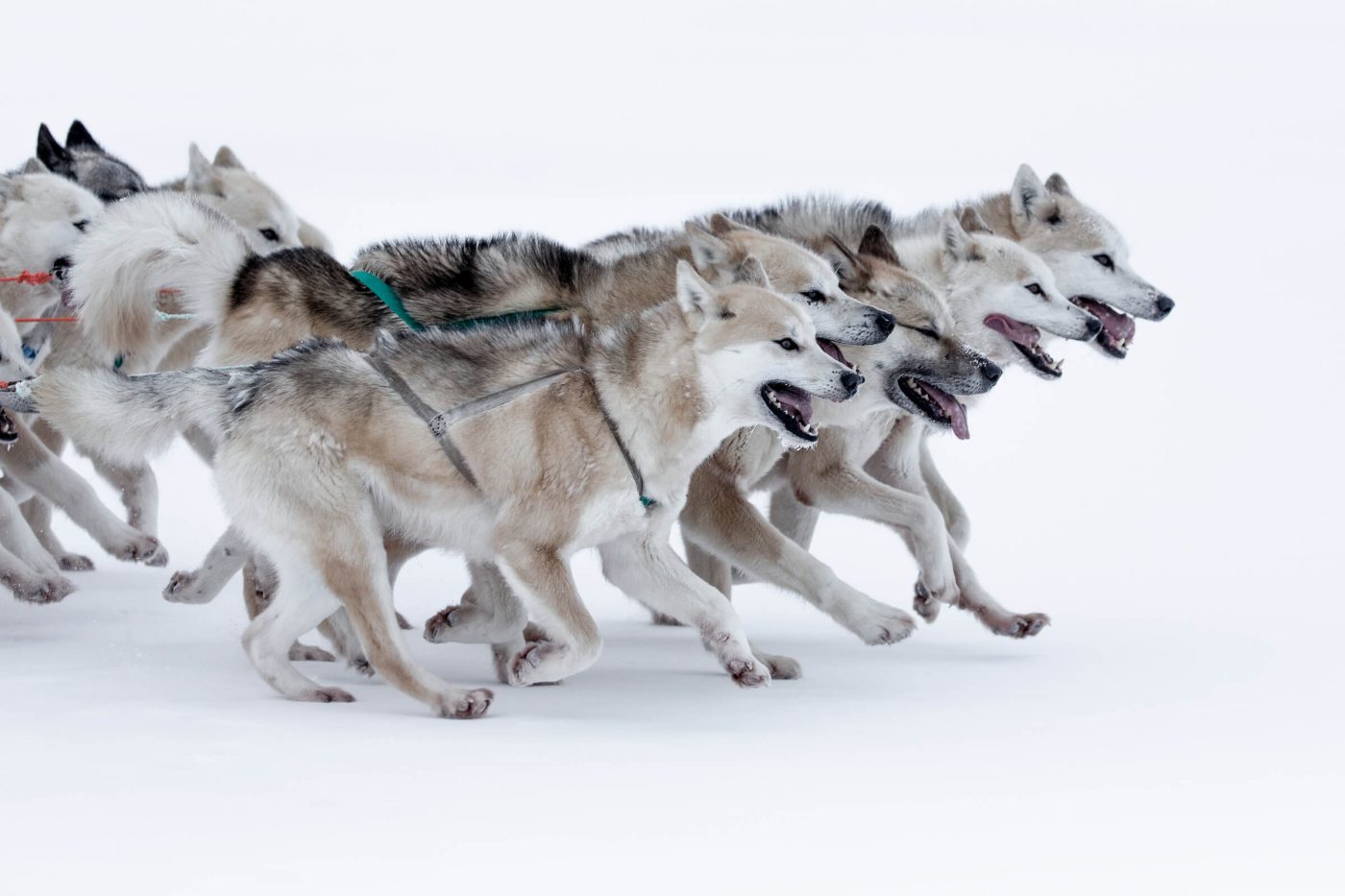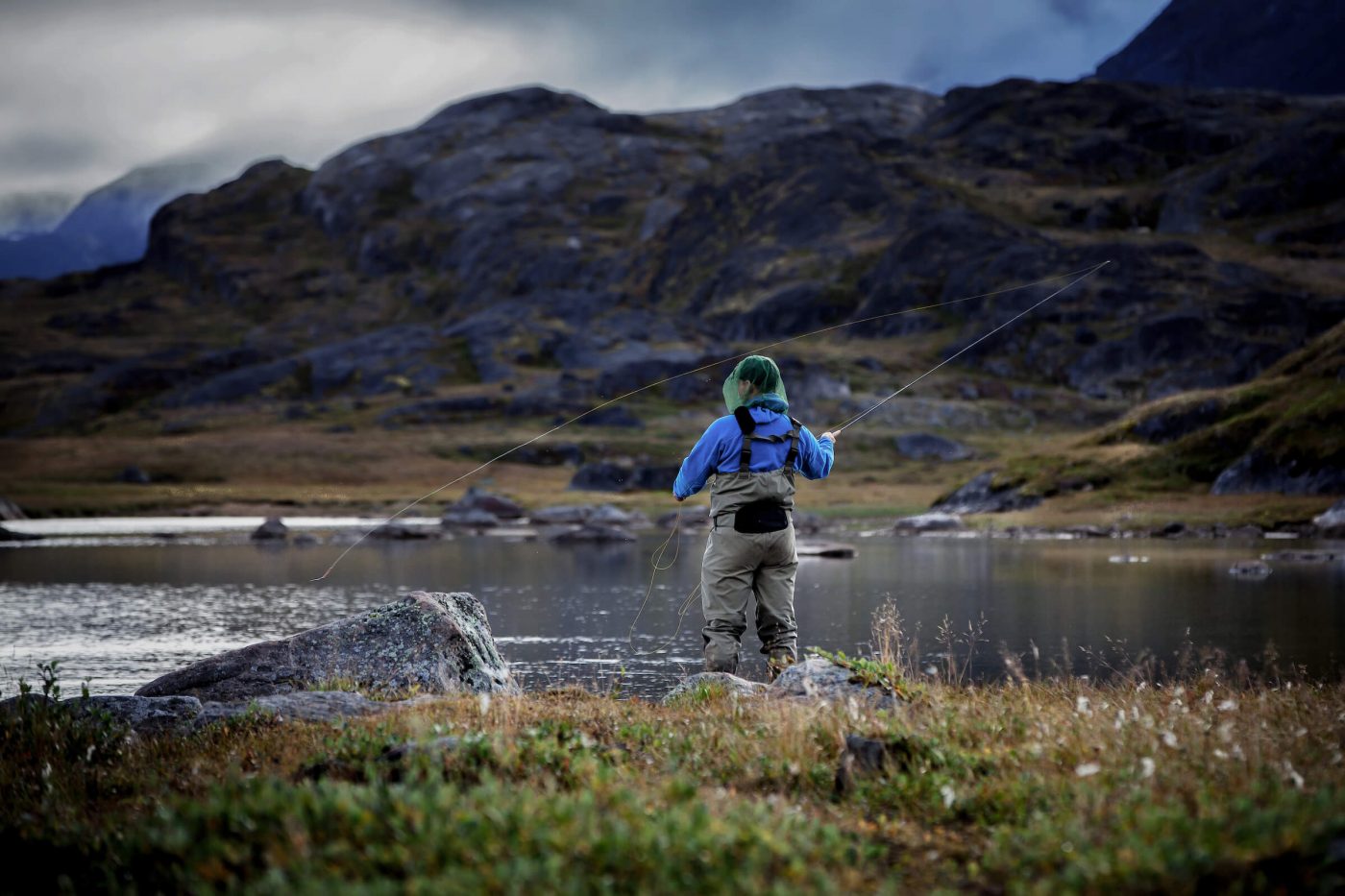There are excellent chances to see many kinds of birds in Greenland, especially if you have good binoculars at hand. Over 230 species of birds have been observed, and of these, about 60 breeds in Greenland and 20 who are regular migrants. The other species are roaming guests and seen less often.
On land, you can often see small Passeriformes such as snow buntings, finches, Lapland buntings and northern wheatears. The omnipresent raven is seen frequently both in summer and winter. On a hike in the mountains, you may also be lucky to encounter the rock ptarmigan, which is Greenland’s only gallinaceous bird and favourite hunting prey.
When it comes to birds of prey, it is possible to see white-tailed eagles and the agile, fast-hunting peregrine falcon and gyrfalcon. The birds of prey typically have their nests high up on a steep mountainside, and great care must be taken not to get too close and disturb them. The snowy owl is an iconic bird for Greenland, but it only lives in northern and north-eastern Greenland.
On the sea and along the coasts, you can see, amongst others, northern fulmar, eiders, thick-billed murres, Arctic terns, Arctic skuas and 10-12 species of gull. In wetlands across the country, you can encounter up to 15 different waders such as large ringed plovers, purple sandpipers and red-necked phalaropes.
Snow Bunting
Qupaloraarsuk (GL)
Plectrophenax nivalis (LAT)
The snow bunting (15-18 cm) is a common and widespread breeding bird throughout Greenland. The male is chalk white with black on its wings, back and middle tail feathers. The female is more mottled with grey-brown splashes in the white.
The snow bunting breeds in rocky areas, mountain fields and also close to settlements in May-July. The female builds a nest of grass and hatches the eggs while the male helps feed the chicks. Larvae, small insects and seeds are on the menu. Most birds migrate to North America or Russia in the autumn and return to Greenland in March-April, where, with their beautiful, chirping song, they are a welcome spring messenger.
Northern Wheatear
Qussaq (GL)
Oenanthe Oenanthe (LAT)
The northern wheatear (14-17 cm) is one of the most common breeding birds in Greenland. The male is easily recognisable by the silver-grey top of the head and back, and a black eye line with white eyebrows. The female is more matt in colour without a black eye line. Both sexes have a white rump and white tail with a black reverse T that is clearly seen in flight.
The northern wheatear lives in rocky terrain, mountain shrub heath and mountain fields. Its food consists of insects and little berries, and in the autumn (Aug-Oct) it migrates to West Africa. It is an impressive journey of over 1000 km that the little bird can travel in less than 2 days. It arrives in Greenland again in April-May.

